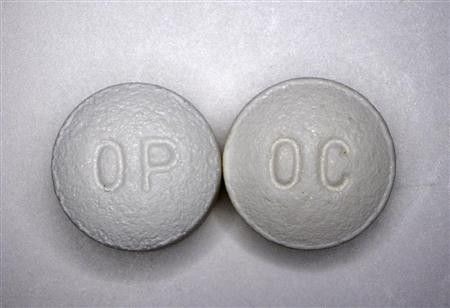Prescription Drug Abusers Exploit Medicare to Score: Report

Prescription drug abusers are exploiting Medicare's prescription drug benefit to score huge quantities of painkillers that have essentially been paid for by U.S. tax dollars, Congressional investigators said in a new report.
Investigators from the Government Accountability Office reported that Medicare officials have been slow to recognize and search for solutions regarding evidence of drug abuse from individuals receiving drug prescription's through Medicare Part D. The agency is set to present their findings at a Senate hearing on Tuesday.
Gregory D. Kutz, the director of forensic audits and special investigations at the accounting office, told The New York Times that some Medicare beneficiaries are seeking out prescriptions from multiple physicians in order to stock up on months -- or even years -- supply of narcotics.
For instance, one case included in the report described a Medicare beneficiary in Georgia who was able to receive a 150-day supply of oxycodone in 27 days by securing prescriptions from seven different doctors. In a one-year period, the same woman obtained prescriptions for a total of 3,655 oxycodone pills -- a 1,679 day supply -- from 58 different physicians and filled them at more than 40 pharmacies.
Another Medicare recipient in California was able to get prescriptions for a nearly five-year supply of fentanyl patches and pills, a powerful narcotic used to treat cancer pain, from 21 different doctors, while a Texas beneficiary was able to score prescriptions for a total of 4,574 hydrocodone pills, a 994-day supply, from 25 different prescribers.
The drugs most commonly abused by Medicare recipients are oxycodone and hydrocodone products, according to the report. Oxycodones include the popular brands OxyContin and Percocet.
The cost of these extraneous prescriptions amounted to $148 million in 2008. Taxpayers pay three-quarters of the cost of Medicare's prescription drug program, which covers approximately 28 million seniors and disabled individuals. However, the report pointed out that prescription drug abuse is a growing problem among people with all types of health insurance plans.
As a result of the report, Sens. Thomas R. Carper, D-Del., the chairman of a Homeland Security and Governmental Affairs subcommittee, and Scott Brown, R-Mass., called the Senate hearing.
As prescription drug abuse rises across our nation, particularly among young people, it is disturbing to think that our public health care system could be subsidizing a major public health crisis, Carper said in a joint statement with Brown.
The accounting office recommended that Dr. Donald M. Berwick, the administrator of the federal Centers for Medicare and Medicaid Services, consider limiting patients who abuse prescription drugs to using only one prescriber or pharmacy. However, Medicare officials are reportedly reluctant to make the changes, citing the need to ensure that beneficiaries have convenient access to care.
High utilization of pain medication is not necessarily an indication of abuse, but could be an indication of poorly coordinated care in the treatment of pain symptoms, the agency said in a written response to the accountability office.
The agency has also pointed to the fact that the 170,000 beneficiaries who the report found abused Medicare's prescription drug plan make up less than 2 percent of all Medicare recipients who were given prescriptions for the 14 most frequently abused medications.
Long-term use of opioids or central nervous system depressants can lead to physical dependence and addiction, in addition to reduced brain function, The National Institute on Drug Abuse reports. Moreover, the 2009 National Survey on Drug Use and Health found that 2.1 percent of 8th graders, 4.6 percent of 10th graders and 5.1 percent of 12th graders had abused the drug OxyContin for non-medical purposes at least once in the year prior to being surveyed.
© Copyright IBTimes 2024. All rights reserved.





















